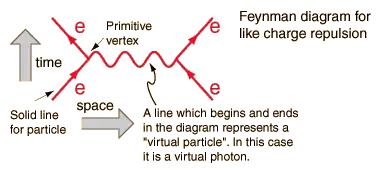Virtual photons are the interaction exchange particles between electrons and therefore responsible for the Coulomb electric force but also magnetic interaction between electrons. Therefore, virtual photons are responsible for the electromagnetic interaction phenomena.
Microscopically, these virtual photons coherent streams are the building blocks by which electric and magnetic flux is made up of and therefore also the electric E and magnetic M interaction fields. I don't know why this is not broadly mentioned in the literature which would resolve a lot of confusion around this subject, thus that both electric and magnetic flux therefore also the E and M interaction fields are made up from these same virtual photons and that only the curl and divergence of the flux lines of the field changes depending on the type of the field E or M generated by the charge.
My question is, can we calculate theoretically the wavelength of the exchanged Coulomb force virtual photon, between two electrons for example separated by distance $d$?
Secondly, as in the case of electrons, are all Coulomb force, virtual photons identical? Meaning can all have the same wavelength?
Could a calculation be as following?:
Virtual particles break conservation of energy in the classical sense. The maximum amount of extra energy can be $ΔE=2ℏc/d$ , where $d$ is the distance between the two interacting electrons, $c$ the speed of light and $λ=πd$ the minimum allowed wavelength of the virtual photon exchanged between the two electrons separated by distance $d$. From there we can calculate $d$ το be $d=2ℏc/ΔΕ$.
